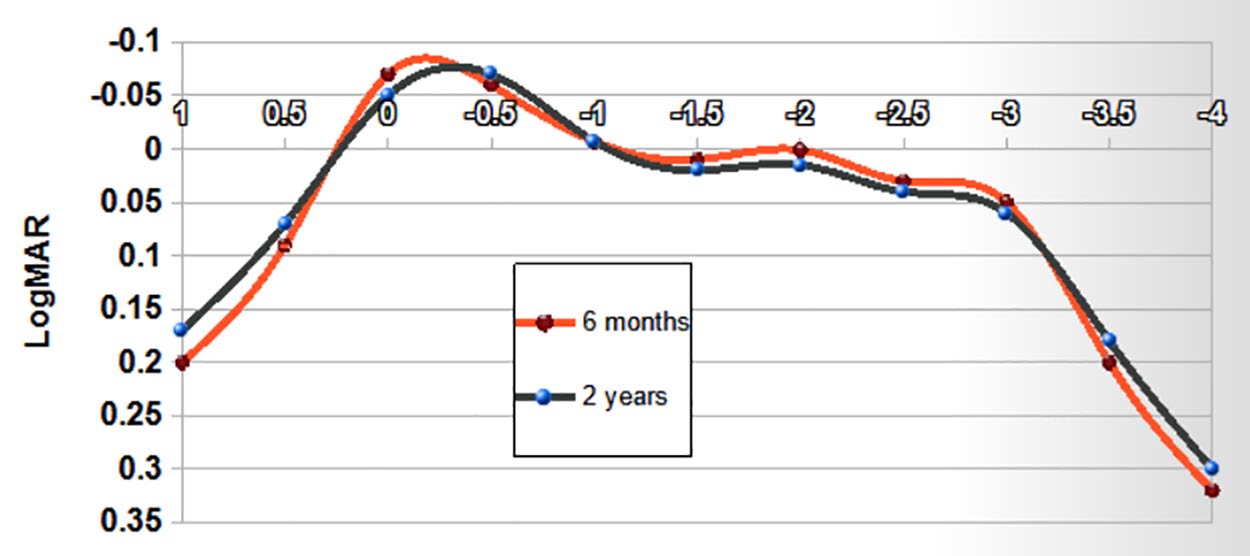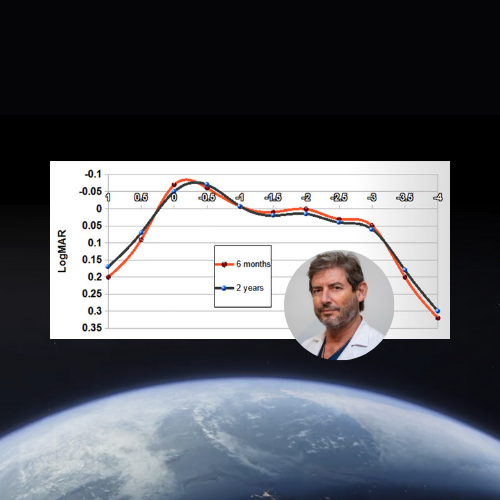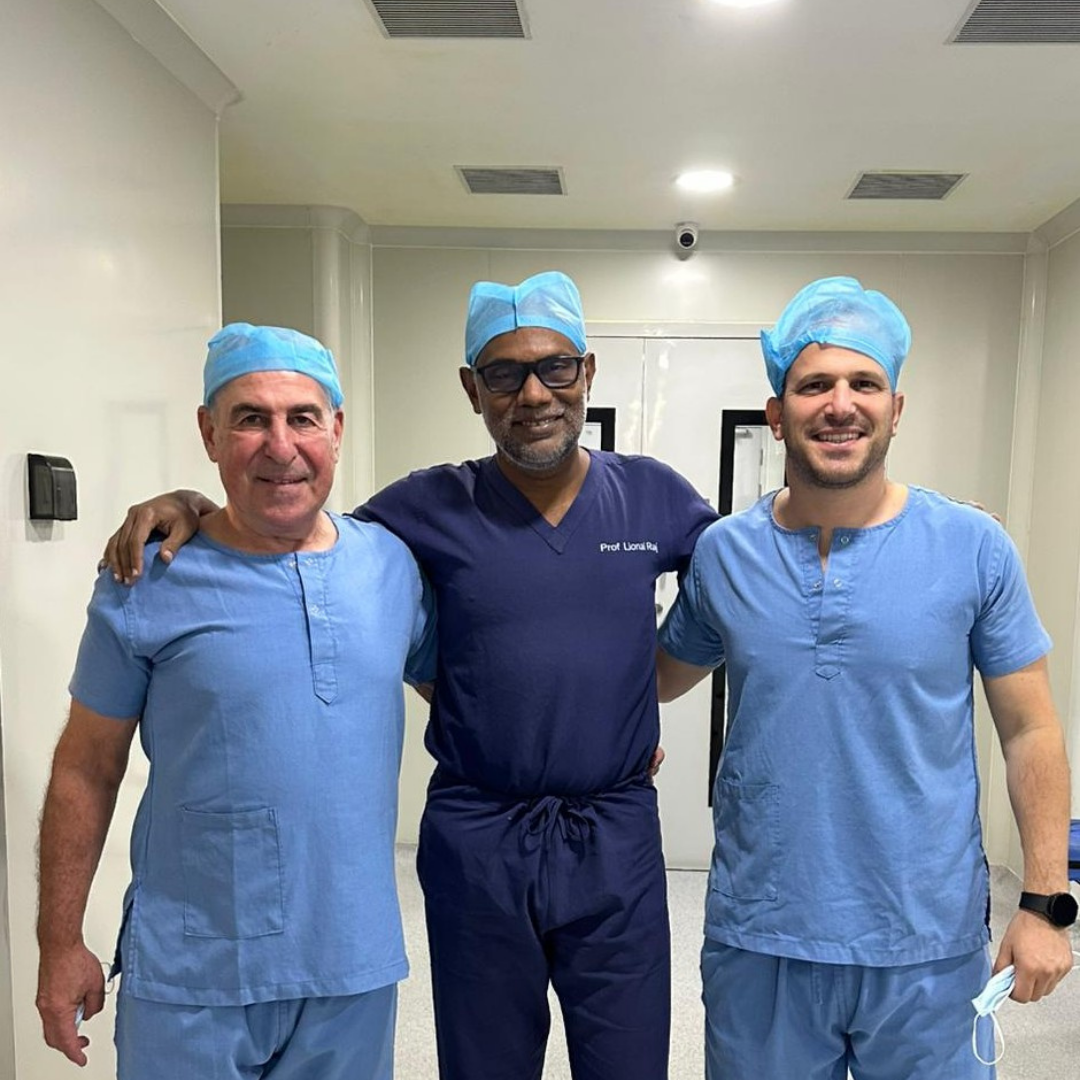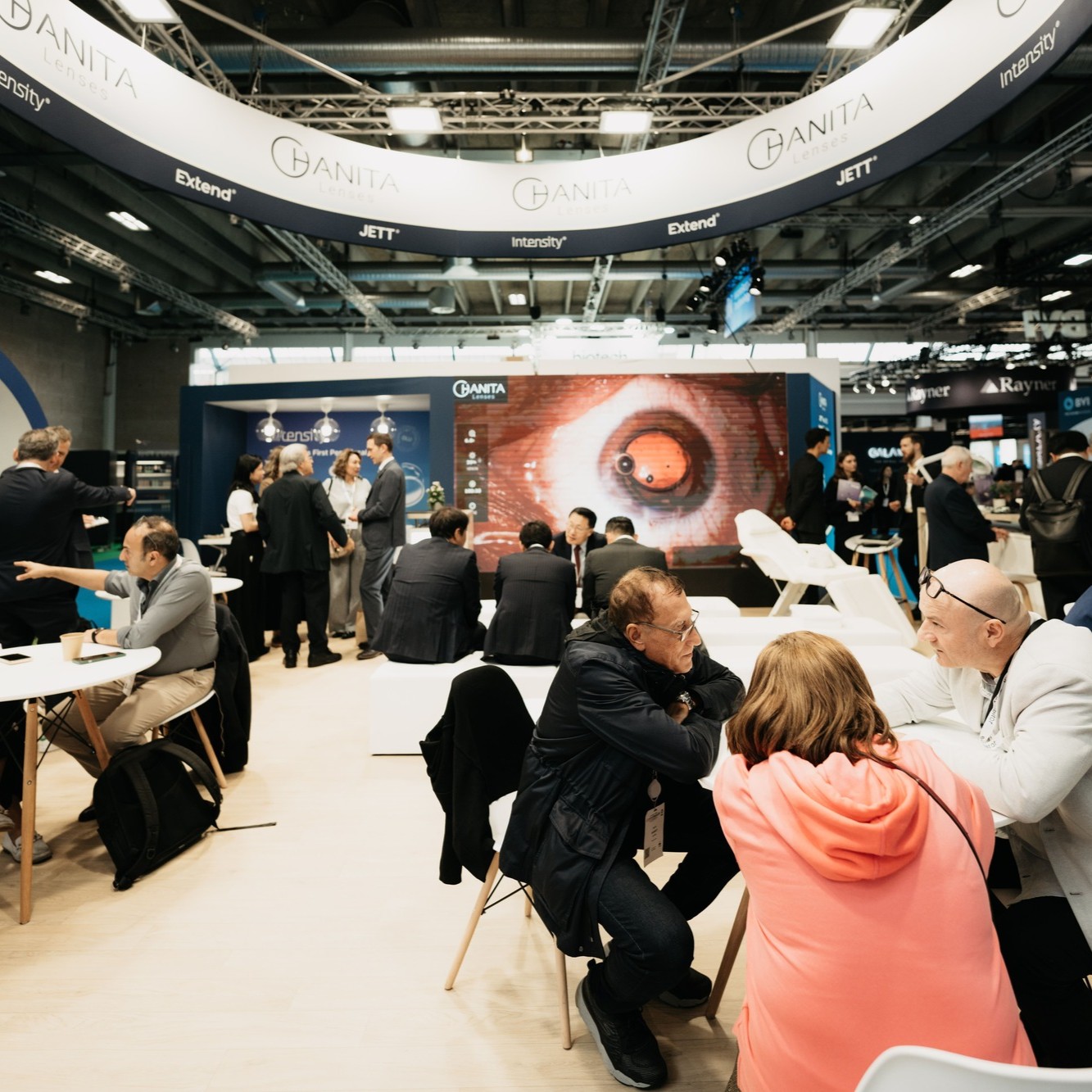A new peer-reviewed study from Dr. Germán R. Bianchi offers a long-term look at the Intensity® IOL – and the results are compelling. Published in Therapeutic Advances in Ophthalmology, this 2-year follow-up confirms that the Intensity® lens delivers not just strong visual acuity outcomes, but lasting ones, with a remarkably high degree of patient satisfaction after cataract surgery.
The Intensity® IOL by Hanita Lenses is a next-generation presbyopia-correcting intraocular lens developed with the proprietary Dynamic Light Utilization (DLU) technology.
This algorithm-driven design optimizes how light is distributed through the lens, offering maximum light intensity utilization for continuous vision throughout the whole range of functional vision. Intensity® is designed to suit the demands of today’s active cataract patients.
Real-World Setting, Long-Term Follow-Up
The study tracked 60 patients (120 eyes) who underwent bilateral Intensity SL implantation with femtosecond laser-assisted cataract surgery between October 2020 and September 2021. All procedures were performed by a single experienced surgeon at Clínica de Ojos Dr. Nano in Buenos Aires. These same patients had also been evaluated at the 6-month mark in a previous study. The new publication compares those earlier outcomes with fresh data collected two years after surgery.
Notably, the study was independent and non-sponsored, reflecting day-to-day clinical practice rather than a controlled trial setting.
Strong, Stable Visual Outcomes
The average of all patients’ results showed excellent visual acuity:
- • Mean binocular uncorrected distance visual acuity (UDVA): −0.05 logMAR
- • Mean binocular intermediate visual acuity (UIVA): 0.009 logMAR
- • Mean binocular near visual acuity (UNVA): 0.04 logMAR
The study also reports that visual performance remained stable between the 6-month and 24-month evaluations. The defocus curve, used to assess visual acuity across a range of distances, was nearly identical at both time points, confirming long-term optical stability. This flat and functional defocus profile is a direct outcome of the Intensity® IOL’s five-foci design and its DLU technology.

Graph: Binocular defocus curve, 6 and 24 months after Intensity SL (120 eyes, 60 patients) implantation.
Safety and Satisfaction: A Winning Combination
The safety profile was equally strong. No intraoperative complications occurred. There were no cases of macular edema, elevated intraocular pressure, or retinal complications.
In terms of visual independence and patient satisfaction, the study revealed impressive outcomes.
These results reflect a high level of patient satisfaction and visual independence across all distances:
- · The VF-14 Quality of Life questionnaire yielded a mean score of 98.6 out of 100
- · 57 patients said they were “very satisfied”; 3 said “satisfied”
- · All 60 patients said they would choose the same treatment again
- · 92% were completely spectacle-free for distance
- · 97% were completely spectacle-free for intermediate vision
- · 93.3% were completely spectacle-free for reading
Mild halos or glare were reported by a small number of patients, but most experienced no visual disturbances at all.
Why This Study Stands Out
While many IOL studies report 3- or 6-month results, long-term data under everyday conditions are rare. Dr. Bianchi’s research helps bridge that gap. It shows that the Intensity® IOL doesn’t just perform well in the short term – it continues to deliver excellent outcomes two years later, both in objective measurements and in subjective patient experience.
As demand grows for premium intraocular lenses that match the lifestyle of today’s cataract patients, findings like these are invaluable for clinical decision-making.
“The far, intermediate, and near vision obtained by the patients operated with the Intensity® IOL allows most of them not to use spectacles.”
About the Author
Dr. Germán R. Bianchi is a highly experienced cataract and refractive surgeon, with over 30,000 anterior segment procedures performed to date. He practices at the Clínica de Ojos Dr. Nano in Buenos Aires, Argentina, where he also serves as Head of the Corneal Transplant Unit. He is recognized for his real-world clinical insight and focus on long-term patient outcomes. In this study, Dr. Bianchi led the conceptualization, data analysis, and manuscript preparation.
Want to read the full study?
And receive the full article by email.




